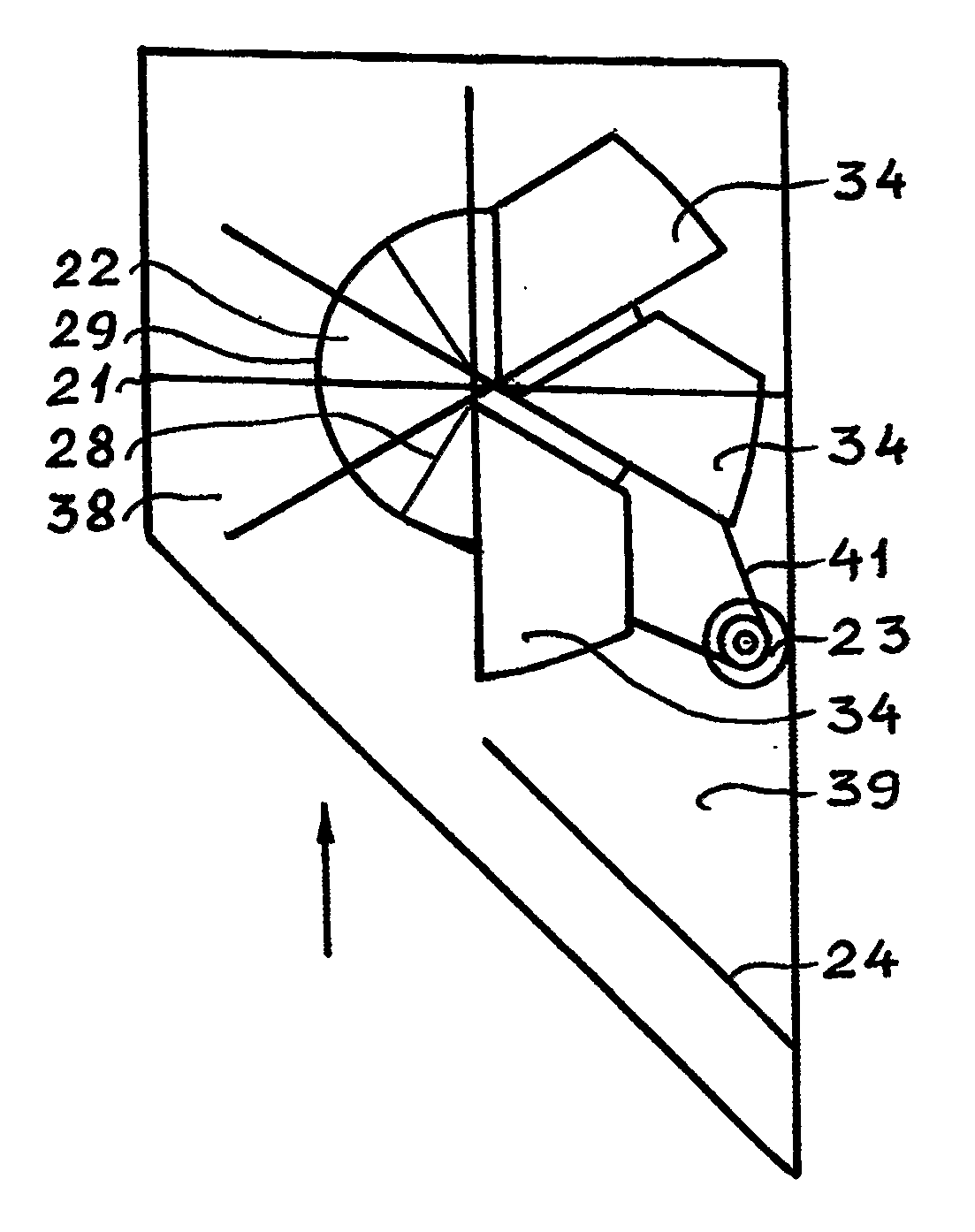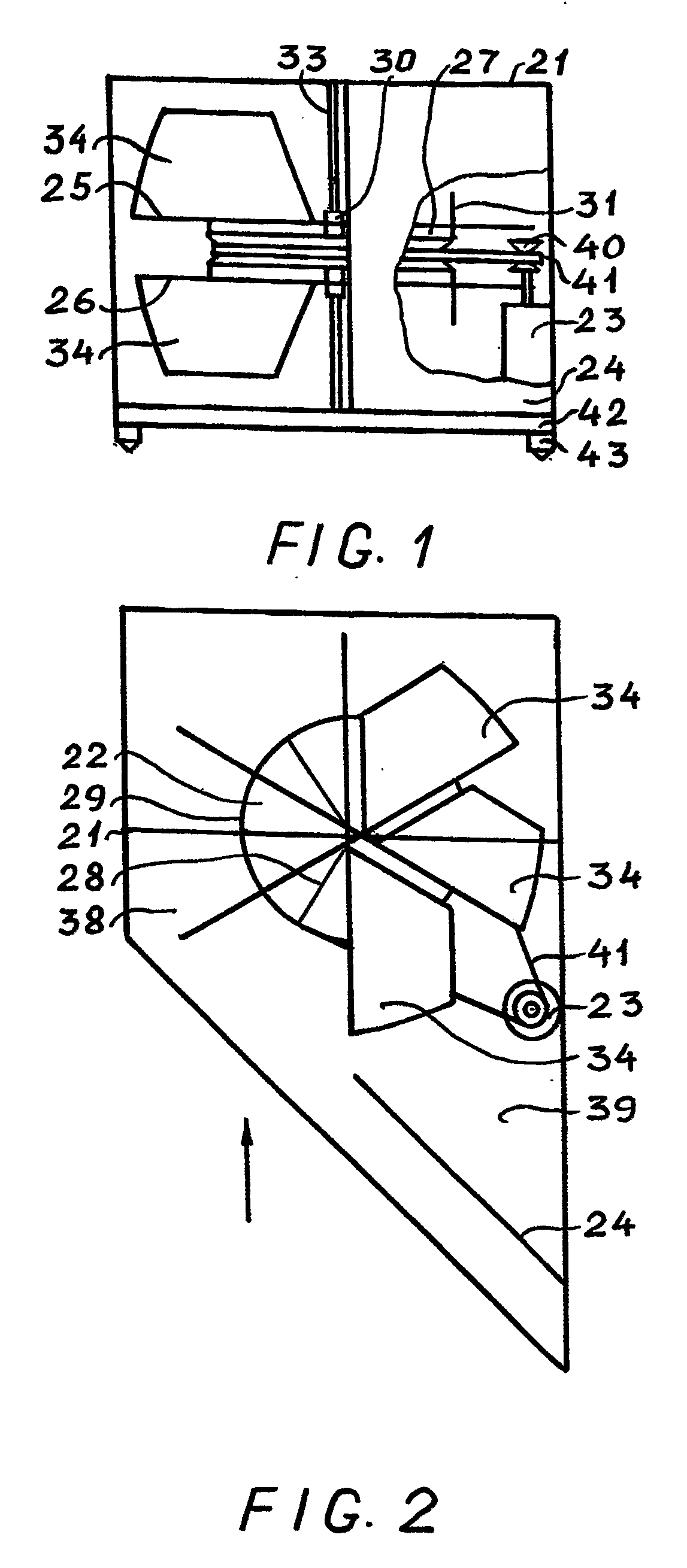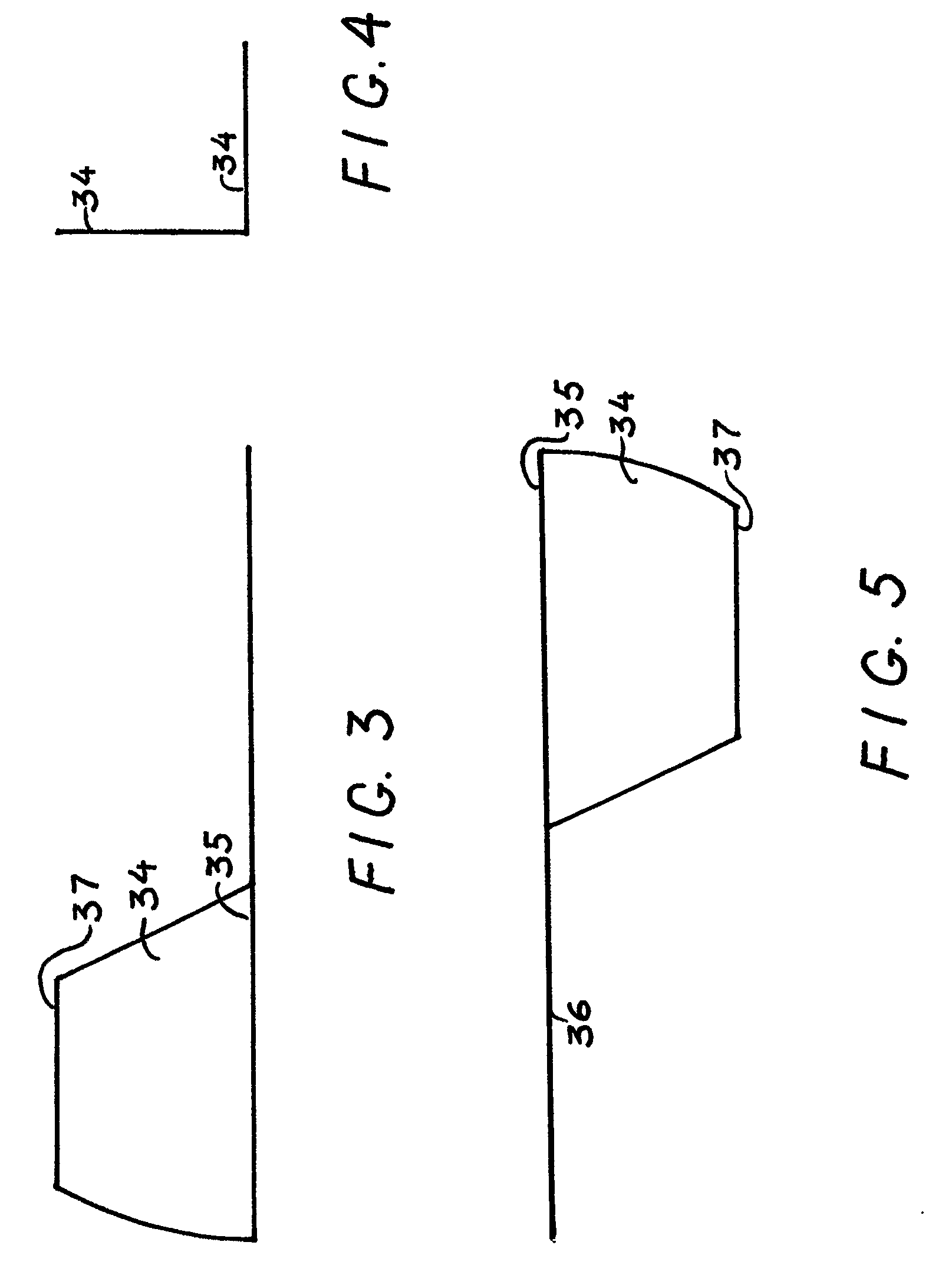Modular system for generating electricity from moving fluid
a technology of moving fluid and modular system, which is applied in the direction of hydro energy generation, non-positive displacement fluid engine components, liquid fuel engine components, etc., can solve the problems of inability to allow modular system installation, requiring relatively complex and consequently costly construction, and the least efficient of the three styles, etc., to achieve simple structure, easy to install and maintain, and convenient and economical construction.
- Summary
- Abstract
- Description
- Claims
- Application Information
AI Technical Summary
Benefits of technology
Problems solved by technology
Method used
Image
Examples
embodiment a
[0071]The embodiment A is the system assembly capable of harvesting the kinetic energy from unidirectional flow of water for producing electricity. The system comprises an array of interconnected submersible units or modules to harness water power. Each system module (see FIGS. 1 and 2) contains a water current energy converter positioned in a protecting housing 21 with proper bearings.
[0072]A converter consists of a detachable vertical axis hydro-turbine 22, the detachable electrical generator 23, and detachable water current deflector 24.
[0073]The turbine 22 is essentially a paddlewheel having an arrangement of two sets 25 and 26 of attached paddles with asymmetrically fixed blades to increase torque and power output. The first set 25 of paddles with floatable blades is located above the working wheel 27, as the second set 26 of paddles with sinkable blades is located below the working wheel 27. A plurality of radial spokes 28 connects the working wheel's rim 29 to the hub 30. Suc...
embodiment b
[0093]The embodiment B is the system assembly comprising an array of interconnected submersible units or modules capable of harvesting the kinetic energy of tides that alternate direction of their movement on 180 degrees. Each system unit or module (see FIG. 9) contains a water current energy converter positioned in a protecting housing 50.
[0094]A converter consists of a detachable vertical axis hydro-turbine 22, analogous to that described in the embodiment A, the detachable electrical generator 23, and two detachable flow deflectors 53 and 54.
[0095]Symmetrically located in inlet / outlet areas of the module, the flow deflectors 53 and 54 are secured to the housing in a pivotal manner. The free end of each flow deflector is able to rotate in the sector restricted by the filter panels 55, 56 and screen panels 57, 58 incorporated into protecting housing 50. The arrangement of the flow deflectors is such that they are urged by incoming flow of water to rotate toward the screen panels wh...
embodiment c
[0098]The embodiment C is the system assembly comprising an array of interconnected units or modules capable of harvesting the kinetic energy of wind.
[0099]Each system unit or module depicted in FIGS. 10 and 11 contains a wind energy converter positioned in a housing 60.
[0100]A converter consists of a detachable vertical axis turbine 61 with a set of paddles 62 located below the working wheel, and the detachable electrical generator 23, connected to the wheel's outer diameter (rim) 29, as shown in FIGS. 10 and 11.
[0101]The system module's housing 60 is a strong steel frame having a shape of the right square prism. Additionally, the housing includes the detachable screens to prevent collisions with birds.
[0102]This vertical axis wind turbine, illustrated separately in FIG. 12, works in a similar way as a turbine for water applications described in the embodiments A and B. The turbine's paddles and blades can be produced from any suitable lightweight and strong material, and are of th...
PUM
 Login to View More
Login to View More Abstract
Description
Claims
Application Information
 Login to View More
Login to View More - R&D
- Intellectual Property
- Life Sciences
- Materials
- Tech Scout
- Unparalleled Data Quality
- Higher Quality Content
- 60% Fewer Hallucinations
Browse by: Latest US Patents, China's latest patents, Technical Efficacy Thesaurus, Application Domain, Technology Topic, Popular Technical Reports.
© 2025 PatSnap. All rights reserved.Legal|Privacy policy|Modern Slavery Act Transparency Statement|Sitemap|About US| Contact US: help@patsnap.com



